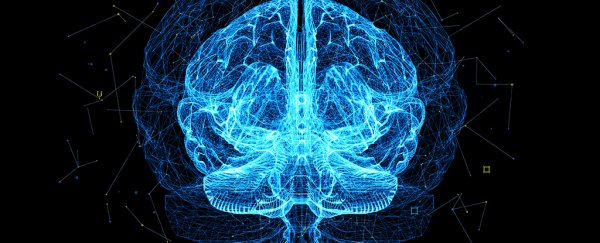Researchers have discovered two types of human brain cells that physically help us form memories.
These cells play a significant role in dividing continuous conscious experience into distinct segments that can be recalled in the future.
As we move from the past, through the present, and into the future, we form autobiographical memories – reference points of ourselves in a particular place and time. These memories are chunky, having clear beginnings and ends, and we stitch these threads together to form a continuous narrative of ourselves.
Similar to how we perceive objects and entities in the world, our memories have clear boundaries, and in the new study, neuroscientists ask if the neurophysiological formation of memories reflects the discrete character of memories in our conscious experience.
The team gathered data from epilepsy patients who had electrodes surgically implanted into their brains to locate where their seizures were taking place.
With their consent, epilepsy patients often take part in neuroscientific studies due to these useful intracranial electrodes. They allowed investigators to record the activity of individual neurons while patients viewed film clips with 'cognitive boundaries'.
While these boundaries in our daily lives may be nuanced and less obvious, scientists, for research purposes, focused on what they called 'hard' and 'soft' boundaries.
"An example of a soft boundary would be a scene with two people walking down a hallway and talking, and in the next scene, a third person joins them, but it is still part of the same overall narrative," said Ueli Rutishauser, a neurosurgeon at Cedars-Sinai hospital, interim director of the Center for Neural Science and Medicine, and co-author of the study.
"The difference between hard and soft boundaries is in the size of the deviation from the ongoing narrative. Is it a totally different story, or like a new scene from the same story?"
Researchers were able to find two types of cells that responded to these cognitive boundaries: 'boundary cells', that responded to both soft boundaries and hard boundaries, and 'event cells' that responded solely to hard boundaries.
Rutishauser and his team believe that when the activity of event and boundary cells peak, after a hard boundary when both cells fire, the brain enters the state of initiating a new memory.
"A boundary response is kind of like creating a new folder on your computer," said Rutishauser.
"You can then deposit files in there. And when another boundary comes around, you close the first folder and create another one."
When the brain needs to revisit a memory, it uses the peaks of neural activity at these boundaries to find the right folder.
"When you try to remember something, it causes brain cells to fire," Rutishauser said.
"The memory system then compares this pattern of activity to all the previous firing peaks that happened shortly after boundaries. If it finds one that is similar, it opens that folder. You go back for a few seconds to that point in time, and things that happened then come into focus."
Investigators then tested their theory by asking participants where or not they'd seen certain images in the film clips. Confirming the researchers' suspicions, participants were more likely to recall images that closely followed a hard or soft boundary, at a point of a new memory being formed.
In another test, participants were asked which image out of a pair of images they saw first while viewing the film clips. Participants found it more difficult to remember the correct sequence if the images appeared on opposite sides of a hard boundary, suggesting the brain had segmented those images into separate memories.
"Together, these findings suggest that boundary and event cells play two roles in episodic memory; they structure memories during encoding, and they serve as markers for periods of time that are later reinstated," say the authors.
What's more, when the event cells fired in time with one of the brain's internal rhythms, the theta rhythm – a wave form of neurological activity that has been associated with learning, memory and navigation – participants could better remember the order of images they had seen.
"Theta rhythms are thought to be the 'temporal glue' for episodic memory," said post doctoral fellow Jie Zheng from Harvard Medical School, first author of the study.
"We think that firing of event cells in synchrony with the theta rhythm builds time-based links across different memory folders."
Therefore, event cells appear to help us establish the temporal order of our memories, whereas the boundary cells are more involved in recognizing the content of memories.
The study was published in the journal Nature Neuroscience.
